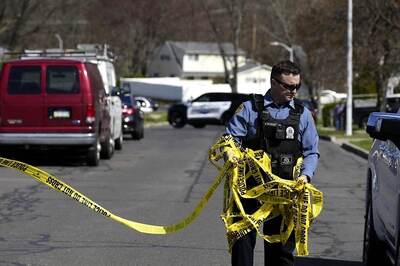
views
Bhubaneswar: Known for the wide streets lined luxuriantly with green trees and the orderly way of traffic and life in general, Odisha’s capital city of Bhubaneswar suddenly lost its enviable tag of a “pleasant city” in the wake of cyclone Fani that ripped through the state’s coastal belt.
As the extremely severe pre-monsoon storm battered eight districts along the sea in Odisha on May 3, the capital city was left paralysed and enveloped in darkness like a proverbial ghost town.
With winds gushing about at a speed close to 200 kmph, electricity lines across Bhubaneswar were mostly cut as poles were either uprooted or twisted.
Metal electricity poles, wires and telephone cables lay in a mangled mess on stretches across the city.
Power supply was disconnected by the authorities before the cyclone, the most powerful one to hit India since 1999, made a landfall in nearby Puri to avoid loss of lives.
After the heavy rain that accompanied gusty winds subsided in the afternoon, all of Bhubaneswar’s roads were submerged in darkness.
With almost all public and private buildings having been left damaged by the cyclone, very few people were seen on the road.
As all the shops remained closed, there was a scramble for essential commodities such as milk and food.
Power supply was not restored in the capital 24 hours after the cyclonic storm hit the state even as massive restoration exercise was on to restore the same.
Lack of adequate water supply worsened the crisis and sparked protests in some parts of the city.
Green, leafy trees that lined most roads of Bhubaneswar, adding to the city’s beauty and giving relief to pedestrians from the scorching summer sun, have been the biggest casualty of cyclone Fani.
While the branches of most trees were felled by the monstrous winds, hundreds of trees were also uprooted.
The cyclone’s fury on the lush foliage of Bhubaneswar can be seen best on the stretch between Acharya Vihar Square and AG Square.
The railway station in Bhubaneswar and the Biju Patnaik International Airport also suffered extensive damage.
Mighty winds brought down the waterproof sheds of the airport, giving it a deserted look. All flights from Bhubaneswar were cancelled from May 2 midnight in view of the cyclone. Operations resumed partially on May 4.
Life in the low-lying areas of the city and slums has also been hit. Incessant rain has turned these places into puddles, while strong winds have pulled down most of the huts.
The state government had launched a massive evacuation exercise in vulnerable districts two days before the cyclone’s landfall, shifting a record 11 lakh people to shelter homes.
The death toll reached 12 on May 4, though Chief Minister Naveen Patnaik said it was “a single-digit figure”.
















Comments
0 comment